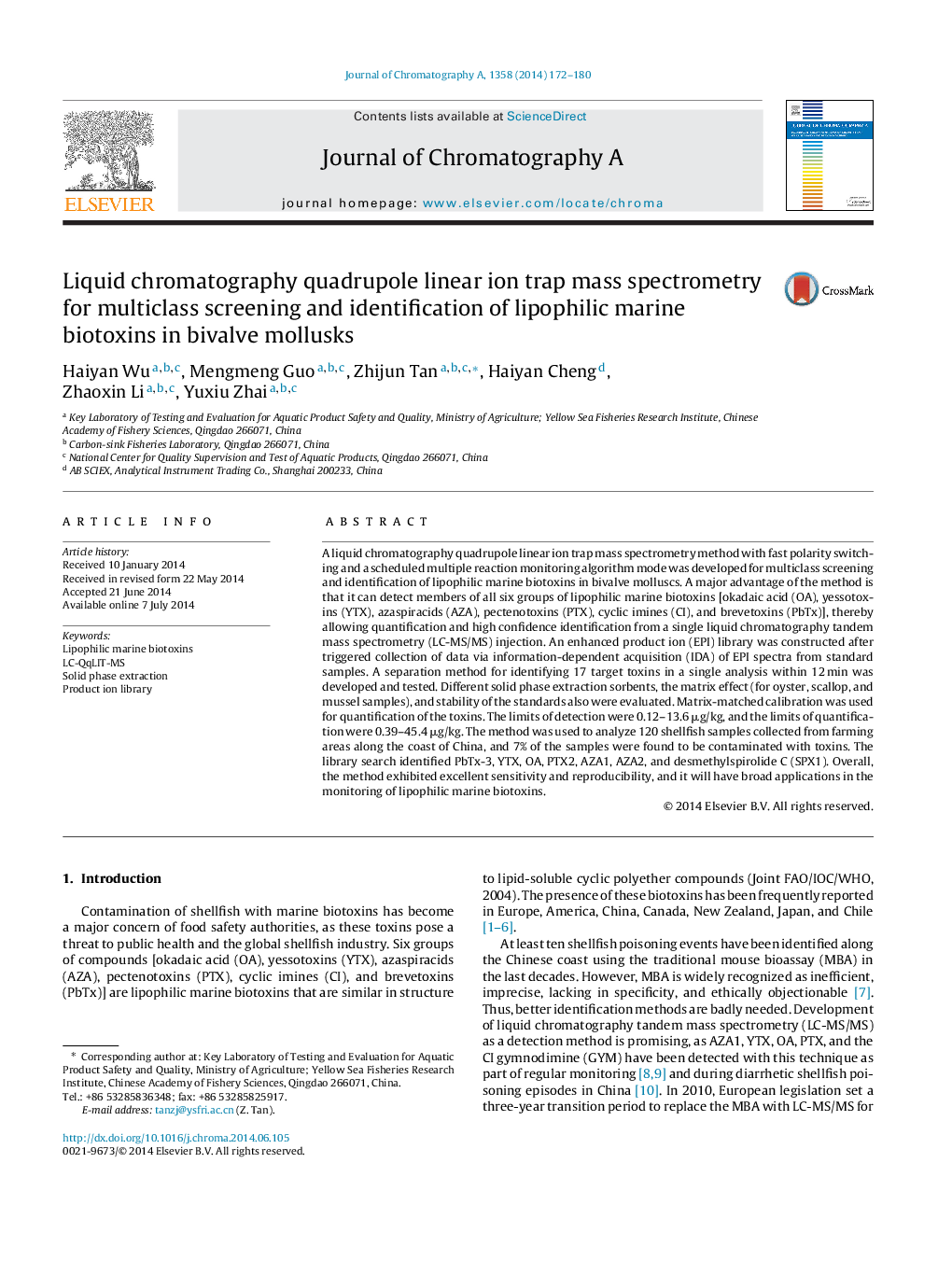| Article ID | Journal | Published Year | Pages | File Type |
|---|---|---|---|---|
| 7612735 | Journal of Chromatography A | 2014 | 9 Pages |
Abstract
A liquid chromatography quadrupole linear ion trap mass spectrometry method with fast polarity switching and a scheduled multiple reaction monitoring algorithm mode was developed for multiclass screening and identification of lipophilic marine biotoxins in bivalve molluscs. A major advantage of the method is that it can detect members of all six groups of lipophilic marine biotoxins [okadaic acid (OA), yessotoxins (YTX), azaspiracids (AZA), pectenotoxins (PTX), cyclic imines (CI), and brevetoxins (PbTx)], thereby allowing quantification and high confidence identification from a single liquid chromatography tandem mass spectrometry (LC-MS/MS) injection. An enhanced product ion (EPI) library was constructed after triggered collection of data via information-dependent acquisition (IDA) of EPI spectra from standard samples. A separation method for identifying 17 target toxins in a single analysis within 12 min was developed and tested. Different solid phase extraction sorbents, the matrix effect (for oyster, scallop, and mussel samples), and stability of the standards also were evaluated. Matrix-matched calibration was used for quantification of the toxins. The limits of detection were 0.12-13.6 μg/kg, and the limits of quantification were 0.39-45.4 μg/kg. The method was used to analyze 120 shellfish samples collected from farming areas along the coast of China, and 7% of the samples were found to be contaminated with toxins. The library search identified PbTx-3, YTX, OA, PTX2, AZA1, AZA2, and desmethylspirolide C (SPX1). Overall, the method exhibited excellent sensitivity and reproducibility, and it will have broad applications in the monitoring of lipophilic marine biotoxins.
Keywords
Related Topics
Physical Sciences and Engineering
Chemistry
Analytical Chemistry
Authors
Haiyan Wu, Mengmeng Guo, Zhijun Tan, Haiyan Cheng, Zhaoxin Li, Yuxiu Zhai,
